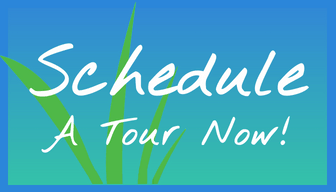 Ah, the nervous system, what a wonderful and amazing thing. Information comes in, sensory — and response goes out, motor. Every other system of the body requires the nervous system to be working efficiently in order to do its work. It can work consciously or unconsciously. It has a somatic portion — want to do something, then think and do. It has an autonomic portion that operates automatically — no thought required. Together, they allow us to operate and interact successfully with our world. Conscious thought can be used to affect the autonomic — breath rate and digestion being examples. Likewise, what was somatic can become automatic. When we repeat a behavior, a sensory-motor pattern is established and it becomes automatic — no thought required. We call this a habit. Habits can be functional and useful, or not so useful, leading to dysfunction. The goal of therapy is working towards a more functionally operating body. Milton Trager said, “Muscles are dumb — it is the mind I’m after. His study of himself and his work with others led him to this realization. Muscle contraction and release is simply a response to signals from the nervous system, the mind. He focused his work on interacting and engaging the mind to make a more functional body. This is the body-mind connection. When I realized that contact with the nervous system was key to having a therapeutic effect, it changed my work. Everything I do in a session or even in life is an attempt to engage the nervous system in a state of awareness. Engaging the mind through awareness allows the body to choose a response, and thus change becomes possible. Our nervous system allows us to operate consciously (aware) or unconsciously (reflex or habitual). In a state of awareness, we are able to think and choose our response. In an unconscious state we react to our sensory input as we are programmed, either by the nervous system (think about the reflex when you touch something hot) or by what we have learned and repeated (why an athlete practices). Both of these states of mind allow us to interact with the world and can either result in positive (functional) or less than positive (dysfunctional) results. The more I work with people, the more I realize that most of what I work with is the result of unconscious, habitual patterns. One of the goals of therapy is to engage the client to consciously become aware of the patterns in his or her body, and if these are not functional, to learn a new sensory-motor pattern to replace the one that is not working. We do this by giving our clients sensory information through touch, movement and practices (think homework). This allows a conscious interaction between mind and body. Now there is active participation in what we do. Milton Trager had it right, “Muscles are dumb — it is the mind I’m after”. How do you engage the mind when working with your clients? If exploring ways to do this in a gentle, awareness-based manner is of interest to you, come join Deane Juhan in the Resistance/Release workshop Friday through Sunday, December 7-9 at FSM. Deane studied with Dr. Trager and will be sharing his experience of years of working to engage the mind to bring the greatest function and ease to the body. Check the FSM website to read a description. For information or to register, contact Frank Merillat at 352-371-0743 or email at fmerillat@mac.com.
Ah, the nervous system, what a wonderful and amazing thing. Information comes in, sensory — and response goes out, motor. Every other system of the body requires the nervous system to be working efficiently in order to do its work. It can work consciously or unconsciously. It has a somatic portion — want to do something, then think and do. It has an autonomic portion that operates automatically — no thought required. Together, they allow us to operate and interact successfully with our world. Conscious thought can be used to affect the autonomic — breath rate and digestion being examples. Likewise, what was somatic can become automatic. When we repeat a behavior, a sensory-motor pattern is established and it becomes automatic — no thought required. We call this a habit. Habits can be functional and useful, or not so useful, leading to dysfunction. The goal of therapy is working towards a more functionally operating body. Milton Trager said, “Muscles are dumb — it is the mind I’m after. His study of himself and his work with others led him to this realization. Muscle contraction and release is simply a response to signals from the nervous system, the mind. He focused his work on interacting and engaging the mind to make a more functional body. This is the body-mind connection. When I realized that contact with the nervous system was key to having a therapeutic effect, it changed my work. Everything I do in a session or even in life is an attempt to engage the nervous system in a state of awareness. Engaging the mind through awareness allows the body to choose a response, and thus change becomes possible. Our nervous system allows us to operate consciously (aware) or unconsciously (reflex or habitual). In a state of awareness, we are able to think and choose our response. In an unconscious state we react to our sensory input as we are programmed, either by the nervous system (think about the reflex when you touch something hot) or by what we have learned and repeated (why an athlete practices). Both of these states of mind allow us to interact with the world and can either result in positive (functional) or less than positive (dysfunctional) results. The more I work with people, the more I realize that most of what I work with is the result of unconscious, habitual patterns. One of the goals of therapy is to engage the client to consciously become aware of the patterns in his or her body, and if these are not functional, to learn a new sensory-motor pattern to replace the one that is not working. We do this by giving our clients sensory information through touch, movement and practices (think homework). This allows a conscious interaction between mind and body. Now there is active participation in what we do. Milton Trager had it right, “Muscles are dumb — it is the mind I’m after”. How do you engage the mind when working with your clients? If exploring ways to do this in a gentle, awareness-based manner is of interest to you, come join Deane Juhan in the Resistance/Release workshop Friday through Sunday, December 7-9 at FSM. Deane studied with Dr. Trager and will be sharing his experience of years of working to engage the mind to bring the greatest function and ease to the body. Check the FSM website to read a description. For information or to register, contact Frank Merillat at 352-371-0743 or email at fmerillat@mac.com.



